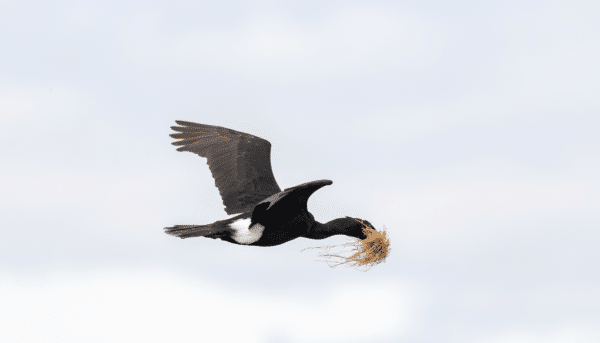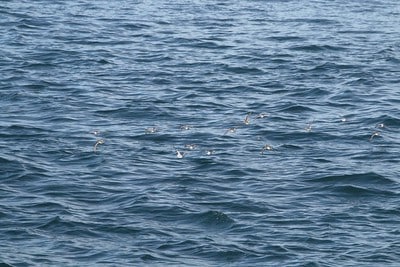Written by: Megan, Marine Naturalist
The Salish Sea off the coast of Vancouver Island is absolutely teeming with wildlife and it’s no difference for our avian species. It can sometimes take a while to find our whales on a tour so bird spotting can be a great way to pass the time.
Here are a few marine bird species you can expect to find on our tours:
Gulls
Probably everyone’s most familiar bird “seagulls” are a common sight on our tours, but did you know, seagulls are not actually a species? There are hundreds of Gull species all over the world and we have at least 14 different types in British Columbia from the Glaucous Winged to the Western.
Cormorants
These dense-boned individuals can often be seen on rocky ledges around the coast. There are three types here; Brandts, Pelagic, and Double Crested. You can usually find all three at our local ecological reserve Mandarte Island but can you tell which is which?
Common Murres
If you suddenly start to hear a peculiar cry at Race Rocks, have a look around and see if you can find some little black and white birds. Often mistaken for penguins these guys aren’t related to our flightless friends. They are part of the Auk family and their distinct cry is an easy way to identify them.
Bald Eagles
Bald eagles are well-known as the national bird of the United States of America but did you know there are actually MORE bald eagles in Canada than the USA? These majestic birds’ mate for life and their nests can be up to 2 meters wide and 1 meter deep!
Turkey Vultures
In late September and October, we see an increase in these birds as they prepare to fly north. Whilst preparing they display a behaviour called kettling where they practice riding thermal updrafts. They will ride these winds for long distances south for the winter minimizing the effort it takes for them to travel their migration route.
Red-necked phalaropes
These tiny little birds are very special and we only see them in Autumn. They come from the Arctic and stop in to feed in the Salish Sea on their way to South America. This year we had an unprecedented amount, estimated to be about 4,000 birds at Race Rocks.
Brown Pelicans
Brown pelicans stand on their eggs to incubate them with their feet. Due to pesticides weakening the eggshells in the ’60s and ’70s, pelican numbers severely dropped around North America. After specific pesticides were banned, they have made a slow recovery and although they are never a guaranteed sighting, we are starting to see more of them throughout the season, particularly at Race Rocks!
For more information on avian species of the Salish Sea, check out our guide on marine birds.
Want a chance to see these birds and more? Come Experience The Wild on one of our covered vessel tours!
















